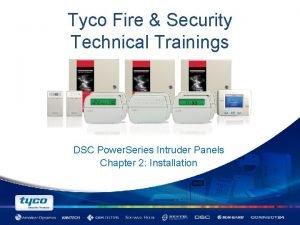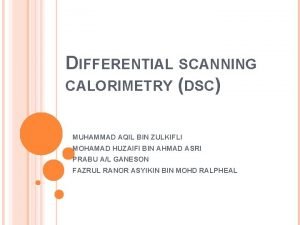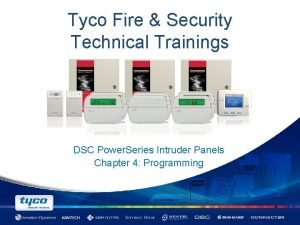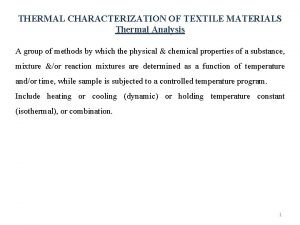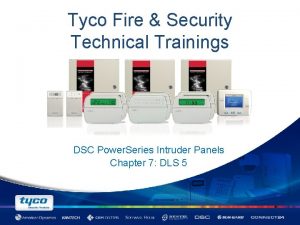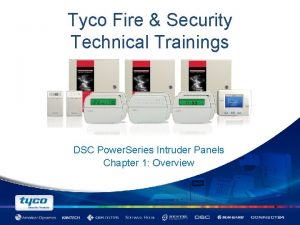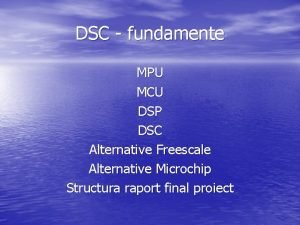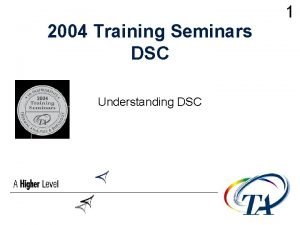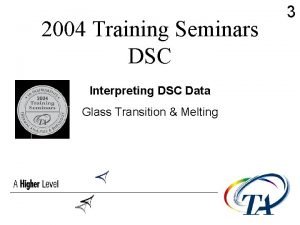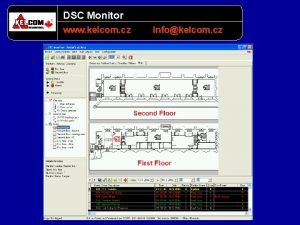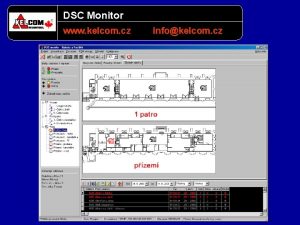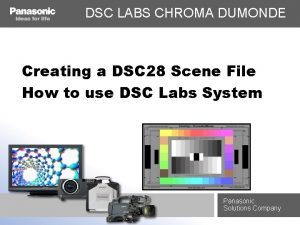Tyco Fire Security Technical Trainings DSC Power Series













- Slides: 13

Tyco Fire & Security Technical Trainings DSC Power. Series Intruder Panels Chapter 2: Installation

Objectives • After successfully completing this training the student should be able of: – Know the Power. Series Terminals – Know how to install a Power panel

Terminals - Keybus • 1. Keybus terminals: • These terminals are used by the control panel to communicate to all modules • Specifications: • Maximum current draw = 700 m. A, this power is shared between AUX and Keybus

Terminals - Keybus • Keybus Wiring Specification: – Minimum 22 gauge, 4 conductor – Module can be home run, T-tapped, or connected in series – Modules can be connected anywhere on the bus – No module can be more than 1000 feet(300 mtrs) in wire length from the control panel – No not use shielded wire

Terminals - Zones • Zone terminals: – These terminals are to connect zones to the control panel. Zones may be wired either normally closed, single end-ofline or double end-of-line

Terminals - Bell Circuit • Bell Circuit terminals: – These terminals are used to provide power to a signaling device or devices upon alarm, for example a siren. This circuit is supervised. – Note: if no siren is used, connected a 1000 ohm resistor across terminals • Specifications: Maximum current draw = 12 vdc, 700 m. A (maximum 3 A short term)

Terminals - Auxiliary • AUX terminals: • These terminals are used to provide power to devices which require continuous 12 vdc to operation; for example motion detectors, glassbreak detectors etc.

Terminals - PGM • PGM terminals: – These terminals are used to activate 12 vdc devices based on a programmed condition, for example; turning on an LED when the control panel is armed. • Specifications: – Voltage Rating: 12 vdc – Current Draw: PGM 1= 50 m. A, PGM 2 = 300 m. A, PGM 3* = 50 m. A, PGM 4* = 50 m. A – *PC 1864 only

Terminals - Telephone • Telephone connection terminals: – These terminals are used to connect a telephone line to the control panel. – Ring/Tip = wire to incoming telephone line – R-1/T-1 = wire to premise telephones

Terminals - Earth • Earth ground terminal: – Wire this terminal to an earth ground, for example grounding rod or cold water pipe.

Terminals - Battery • Battery connector: – This connector is used to wire a backup battery. • Specifications: – Battery ratings: 12 vdc, 4 Ah minimum (24 Ah maximum), rechargeable lead acid or gell cell type

Terminals – AC Power • AC Terminals: – These terminals are used to connect an AC transformer (primary power source). • Specifications: – Transformer ratings: 16. 5 VAC, 40 VA

Summary 1. Describe the Power Panels Terminals 2. What’s the Difference between the PGM 2 and the others? 3. How much power can the circuit Bell draw? 4. What’s the maximum distance for the Keybus?







